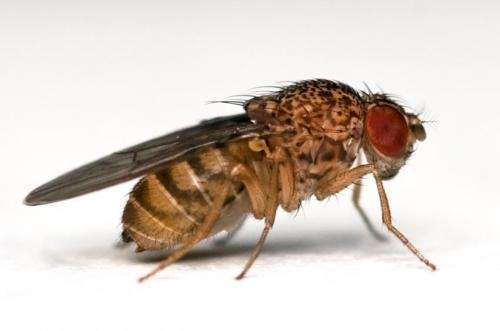Role of cancer-suppressing gene uncovered

University of Adelaide researchers have uncovered the role played by a gene which suppresses the development of cancer.
The findings, published in the journal PLOS ONE, open new opportunities for scientists to find treatments for cancer. The findings shed light on the activity of the gene WWOX.
"We've known for some time that in certain types of cancer people with low levels of WWOX protein are more likely to develop cancer. We also know that cancers with low levels of WWOX tend to be more aggressive and less responsive to treatment," says Professor Rob Richards, Head of Genetics and Evolution in the University's School of Biological Sciences.
"So a higher level of WWOX activity is definitely a good thing to have but, until now, the role that WWOX plays in cancer suppression has been a mystery."
Professor Richards and his team of researchers, Dr Louise O'Keefe and PhD students Amanda Choo and Cheng Shoou Lee, studied the impact of lower levels of WWOX on cells using a genetic model—the small laboratory fly, Drosophila.
"Our research has shown that cancer cells with lower levels of WWOX had a competitive advantage over those cells with normal WWOX levels, and could outgrow them," says Professor Richards. "This could lead to a more aggressive cancer and worse outcomes for cancer patients—poorer survival rates."
Further research showed that the WWOX gene plays a role in the altered metabolism of cancer cells which are known to use glucose differently to normal cells. Cancer cells tend to use glucose to make more cell 'building blocks' than energy, and this is thought to help them to divide and grow.

"Another set of Drosophila experiments revealed that the WWOX gene helps keep the balance of glucose use in favour of producing energy rather than helping cancer cells multiply," says Professor Richards.
"This difference in metabolism is a key part of how cancer cells have a competitive advantage over normal cells. Low WWOX levels will allow more glucose to be used for these cancer cell 'building blocks'."
The good news is that WWOX belongs to a family of proteins that have enzyme activity - this means WWOX activity can be altered by targeting the enzyme.
"We now have a good idea of what WWOX does in cancer cells and how it acts to help suppress cancer. And we have a potential target to be able to influence that activity to change the properties of cancer cells," says Professor Richards.
More information: "Tumor Suppressor WWOX Contributes to the Elimination of Tumorigenic Cells in Drosophila melanogaster." PLoS ONE 10(8): e0136356. doi:10.1371/journal.pone.0136356
















